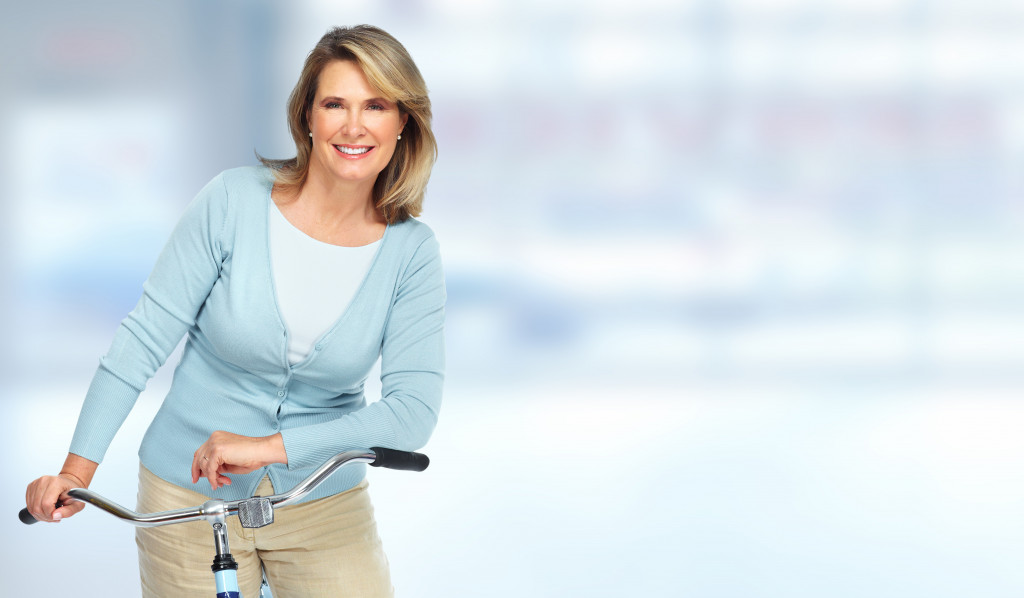If you think being active is a tough goal to reach when you’re in your 40s, you definitely got it wrong. As a matter of fact, experts say that having an active lifestyle can be just as beneficial as being fit in your adolescence phase. That only means it’s never too late to starting an active lifestyle and getting physically and mentally fit.
You won’t surely run out of studies and references confirming that being active can be beneficial for our overall sense of well-being. It can help you perform daily activities much easier, control your weight, make your body stronger, and boost your mood. Most importantly, it can help lower the risks for stroke, cancer, diabetes, and heart disease. Find out how you can stay active and healthy in your 40s with these tips.
1. Improve flexibility and balance
Flexibility and balance are among the things that may decline as we get older. For such reason, it’s critical that you ensure you won’t lose them for a healthier and stronger body. In improving flexibility, take note first that our tendons and muscles naturally lose their elasticity. Become more flexible even in your 40s, you can do yoga or regular stretching.
If you’re planning to include running in your routine, make sure to have at least five to 10 minutes of proper warm-up. As for improving your balance, you can also incorporate yoga moves such as king dancer pose, eagle pose, and tree pose. Even as simple as standing in one leg for several minutes can help improve your balance.
2. Slowly increase the effort
For your workout routines, be sure to increase the intensity and time in a slow manner. An abrupt and quick boost in distance and speed can result in soreness and injury, which you surely don’t want to happen. To avoid injury, most individuals follow the 10% rule when it comes to increasing workout intensity and time. Make changes gradually so your body can properly adjust and preventing yourself from getting hurt.
3. Recover properly
Speaking of soreness and injuries, it’s always important to have a proper recovery. During your younger years, your body might still have the strength and endurance to take on several HIIT workouts. But as you age, you might feel your legs or arms won’t be able to take such intense exercise than before. Instead of forcing your body, listen to it.
If you’re feeling soreness in your legs after a hard workout, take several days off before getting back into your routine. In case you’re experiencing unusual body pain or had an injury from a race in the past, you can seek chiropractic care for a better recovery. Talk to a reputable healthcare physician for more accurate advice.

4. Consume more protein
Again, muscle recovery is a very important part when maintaining an active and healthy lifestyle in your 40s. According to experts, protein is a vital ingredient of post-workout nutrition, and older individuals need more of it than younger ones. Eating more protein, especially after a workout, can help repair and rebuild your damaged muscles and replenish your energy stores.
Besides recovery, protein is also helpful for making you feel fuller for a longer period, helping you resist caffeine or carbs. Some of the best sources of protein are lean meats like fish, tofu, legumes, beans, turkey, and chicken. Use healthier cooking methods when preparing the meats.
Alternatively, you can opt for protein powders instead of eating just meats. This option is generally ideal for those who have a hard time getting protein in meals. Make sure to choose the right protein powders for your needs.
5. Know your limits
While we’re imposing that staying active in your 40s is still pretty much ideal, make sure to still recognize your limits. Even if you’re an active athlete during your 20s, there’s a high potential that you’ll notice declines in your strength or performance.
Some changes you may experience include a decrease in your balance and coordination, shrinking in number and size of muscle fibers, and decline in cardiovascular endurance. Aging experience may also depend on your activity levels, diet, lifestyle, and genetics so exercising hard isn’t always the solution.
Don’t believe naysayers who say having an active lifestyle in your 40s or beyond is unattainable. There are always ways for you to stay fit and healthy, helping you go through the demanding requirements of your work, personal, and family lives. All you need to do is listen to your body and carry out the healthy habits and activities that work best for you.
